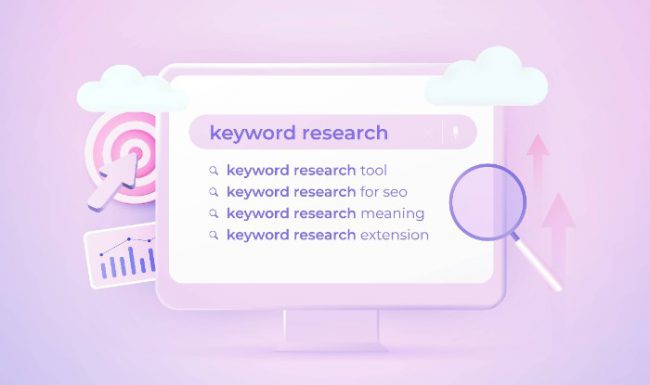
I’ll be breaking down the process into simple, step-by-step instructions that anyone can follow. So, let’s dive in and explore the importance of website authority for your dental practice.
Website authority is crucial for any business, including dental practices. A high website authority means your site is seen as trustworthy and relevant by search engines like Google. This can lead to better search rankings, more organic traffic, and ultimately, more patients for your practice.
In fact, research shows that the top three results on Google’s first page receive about 75% of all clicks source. So, if you’re not ranking high in search results, you could be missing out on a significant number of potential patients.
Now that we understand the importance of website authority, let’s explore backlinks and their role in boosting your dental practice’s online presence.

Before we dive into the world of link building, it’s essential to understand your dental practice’s current online authority. By assessing your backlink profile and using the right tools, you’ll have a solid starting point for your link-building journey. Don’t worry; I’ll guide you through each step, so let’s get started!
Your backlink profile is the collection of all the links pointing to your dental practice’s website. Analyzing it will help you understand where you stand and identify areas for improvement. Follow these simple steps:
For example, you may notice that your blog posts on dental implants have many high-quality backlinks, while your pages about orthodontic services have fewer links. This insight can help you focus your link-building efforts on the areas that need improvement.
There are several tools available to help you assess your dental practice’s website authority. Some popular options include:
For example, if your dental practice’s website has a Moz DA of 30, but other dental websites in your area have DAs of 40 or higher, you may need to work on building more high-quality backlinks to improve your authority.
By understanding your dental practice’s current online authority and backlink profile, you’ll be better equipped to create a successful link-building strategy.

On-page SEO optimization helps search engines understand your content better and increases the chances of ranking higher on Google. In this section, I’ll guide you through the key aspects of on-page SEO, including proper keyword usage and internal linking.

Incorporating relevant keywords in your content and meta tags can improve your dental practice’s search rankings. Here’s a step-by-step guide to proper keyword usage:
For example, if you’re writing a blog post about “dental implants,” your main keyword might be “dental implants,” and related keywords could include “tooth replacement,” “implant surgery,” and “implant procedure.”
Internal links are links within your website that connect one page to another. They help search engines and users navigate your site more efficiently. Here’s how to use internal links effectively:
For example, if you’re writing a blog post about teeth whitening, you could include internal links to your dental practice’s teeth whitening service page and a related blog post about maintaining a bright smile.
By optimizing your content with proper keyword usage and internal linking, you’ll improve your dental practice’s on-page SEO, making it easier for search engines to understand and rank your content. In the next section, we’ll explore off-page SEO strategies that can further boost your website authority and attract more backlinks.

In the world of online marketing, connections matter. Building a solid network of dental professionals can open doors to new opportunities and help you acquire valuable backlinks. In this section, I’ll show you the benefits of collaborating with other dental professionals and guide you through creating mutually beneficial relationships.
Connecting with other dental professionals can have several advantages for your dental practice:
For example, collaborating on a blog post or hosting a joint webinar with another dental professional can help both practices gain exposure, share knowledge, and build authority in the industry.
To build strong connections with other dental professionals, follow these steps:
For example, you could reach out to a local orthodontist and propose co-authoring a blog post about the benefits of early orthodontic treatment. This collaboration would provide valuable content for both practices, create an opportunity for backlinks, and strengthen the professional relationship between you.
By building a solid network of dental professionals, you’ll create opportunities for collaboration, knowledge sharing, and backlink acquisition, all of which can boost your dental practice’s online authority. In the next section, we’ll explore guest blogging and how it can help your dental practice attract high-quality backlinks.

Local SEO is crucial for dental practices, as it helps you attract potential patients in your area. By optimizing your online presence for local searches, you’ll increase your visibility and boost your website’s authority. In this section, I’ll walk you through claiming and optimizing your Google My Business listing and acquiring local citations and directory listings. Let’s dive in!
A well-optimized Google My Business (GMB) listing can improve your dental practice’s local search rankings. Follow these steps to claim and optimize your listing:
For example, you might share a photo of your newly renovated waiting area or post about a special offer for new patients.
Local citations and directory listings can improve your local search rankings and increase your website’s authority. Follow these steps to acquire them:
For example, you might create a listing on a dental directory that highlights your practice’s unique services, such as pediatric dentistry or cosmetic procedures.
By leveraging local SEO, you’ll increase your dental practice’s visibility in local searches and attract more potential patients. In the next section, we’ll discuss how to use social media platforms to promote your content and build valuable backlinks.

Social media is a powerful tool for promoting your dental content and building valuable backlinks. By sharing your content on the right platforms and creating engaging posts, you’ll increase your dental practice’s online presence and authority. In this section, I’ll guide you through choosing the right platforms and crafting attention-grabbing social media posts. Let’s get started!
To choose the right social media platforms for your dental practice, consider these factors:
For example, you might decide to focus on Facebook and Instagram for sharing visually appealing content, like before-and-after dental procedure photos, and LinkedIn for professional articles and networking.
To create social media posts that encourage shares and backlinks, follow these tips:
For example, you might share a post on Facebook with an eye-catching headline like “5 Surprising Foods That Are Damaging Your Teeth” and an intriguing image, along with a call-to-action directing users to your website for more dental health tips.
By utilizing social media effectively, you’ll promote your dental content, encourage shares and backlinks, and increase your website’s authority. In the next section, we’ll explore the importance of analyzing your link building efforts and how to adjust your strategy for even better results.

We understand that link building can be a bit confusing, so we’ve compiled a list of frequently asked questions to address common concerns and misconceptions. Let’s dive into these questions and provide expert advice to help you maximize your link building efforts!
A: Absolutely! Link building is crucial for any website, including dental practices. Quality backlinks signal to search engines, like Google, that your website is trustworthy and authoritative. This can lead to higher search rankings, increased visibility, and more potential patients.
A: Link building is a long-term strategy. While some results may be seen within weeks, it usually takes several months of consistent effort to see significant improvements in search rankings and online authority. Patience and persistence are key.
A: Buying backlinks is not recommended. Google and other search engines penalize websites that engage in this practice. Focus on earning high-quality, natural backlinks through content creation, guest blogging, and relationship building.
A: A dofollow link passes SEO authority (also known as “link juice”) from the referring website to your website, helping improve your search rankings. A nofollow link, on the other hand, does not pass SEO authority. While nofollow links are less valuable for SEO, they can still drive traffic and help build brand awareness.
A: There’s no magic number, as search engine algorithms consider many factors. Focus on quality over quantity, and aim to build a diverse backlink profile from authoritative, relevant sources.
A: There are several tools available, such as Ahrefs and Moz, that allow you to monitor your backlink profile, assess your website’s authority, and track your progress.
By addressing these common questions and concerns, we hope to provide clarity and guidance for your dental practice’s link building journey. Remember, a successful link building strategy takes time, effort, and consistency, but the results are well worth it!
In this comprehensive guide, we’ve covered various aspects of online authority for dental practices. We’ve discussed the importance on-page SEO optimization, networking with other dental professionals, leveraging local SEO, using social media, and more. Throughout your link building journey, remember that it’s an ongoing process that requires commitment and continuous improvement.
As you work on your dental practice’s online authority, celebrate your successes and learn from your challenges. Continuously monitor your progress using key performance indicators (KPIs) and adjust your strategy as needed.
The journey to establishing your dental practice’s online authority is a rewarding one. With dedication and persistence, you can create a strong online presence, attract new patients, and ultimately grow your practice. If you need help along the way, consider partnering with an experienced digital marketing agency like Prosites. We have the expertise to guide you through the process and ensure your dental practice achieves its online authority goals.